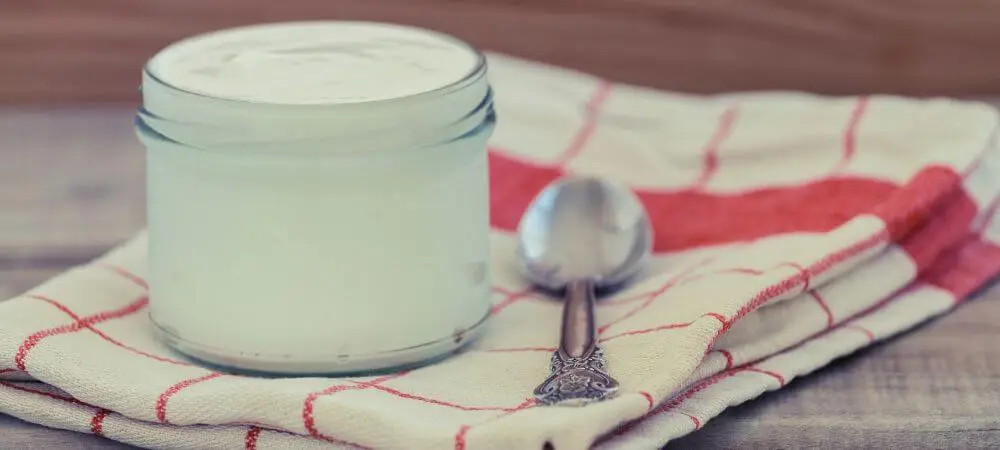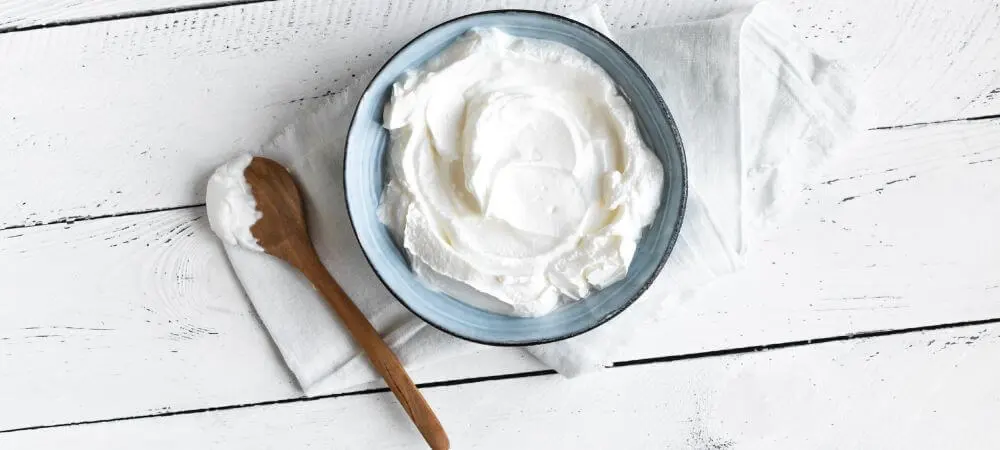With hundreds of recipes on How to Make Greek Yogurt, it is often confusing to understand which one of the best. Even I browsed through 50 odd recipes on the internet when looking for the right Greek Yogurt recipe.
But after trying 4 unsuccessful Greek Yogurt recipes, I finally concluded a fail-proof method of making Greek yogurt at home!
When Greek Yogurt is available in stores, why make it at home?
The answer is simple, to control its ingredients. Often store-bought yogurts come with additional additives and preservatives, which you should avoid. Many brands also enhance the taste of Greek yogurt by adding sugar and fructose.
Hence, Homemade Greek Yogurt is an excellent way to ditch these unwanted ingredients. And it costs you less as well! Yes, homemade greek yogurt costs you almost 15-20 cents lesser than store-bought yogurt.
Do you still need some more motivation to try this recipe?
How To Make Greek Yogurt At Home?
Ingredients:
- 2 cups of Whole Milk
- 1/4 Yogurt with active cultures
Apparatus that You Require
- Heating Pan
- Jar for Yogurt
- Thermometer
Steps to Make Greek Yogurt At Home
- Heat the milk to 185 degrees F. Heating up the milk denature the whey proteins and helps with coagulating, resulting in thicker greek yogurt. For thicker yogurt, maintain the heating temperature for 20 minutes. Stir continuously so that no foam or layer is form
- Now transfer the heated milk to another pot to let it cool down. You can consider an ice bath for quick cooling. Cool down the milk to 100-110°F (37-43°C).
- Now take the yogurt for starter culture and mix it with 1/2 cup warm milk. Stir it well so that yogurt blends completely with the warm milk.
- Now mix the remaining milk and cover the pot with a lid. Take a warm damp cloth to cover the pot from outside.
- Keep it in a warm place to maintain the temperature, such as in a microwave with the light on. Let it sit for 8-10 hours to ferment.
- Your regular yogurt is ready. The next step is distinguishing between regular yogurt and Greek yogurt.
- Use a strainer or mesh/cheesecloth to filter the whey. Transfer the regular yogurt over the mesh cloth with a container beneath.
- Leave it for 2-3 hours to drain out the whey.
Pro tip: If you leave the yogurt to drain at room temperature, the yogurt will become tarter. Keeping it in the fridge while draining will get you a Greek Yogurt with less sourness.
How to Make Greek Yogurt Using Cold Start Process?
If heating and cooling down the milk to a requisite temperature seems botheration, here is the Quick Start Method to help you with quick Greek Yogurt Preparations.
It will save you a lot of time (at least 1 hour) and effort too!
To make the Cold-start method a success, you must use only Ultra-Filtered Milk!
So, what is ultra-filtered milk?
Ultra filtered milk, also known as diafiltered milk, is obtained by passing through pressure to separate milk content based on its sizing.
While the larger fat and protein molecules are retained, the smaller mineral, water, and vitamin molecules pass through the membrane.
| It is creamier in taste with high protein and low-fat content. |
Ingredient:
- 2 Cups Ultra-Filtered Milk
- 1/2 cup Yogurt as starter culture or Freeze-dried starter
Process:
- Mix the Ultra-Filtered Milk and yogurt starter culture by stirring together.
- Pour the mixture into a pot and keep it at 100˚F for 5-6 hours
- And your regular yogurt is ready. Stain through the mesh cloth to get the Greek Yogurt.
Pro Tip:
- There is no need to pasteurize ultra-filtered milk.
How To Make Vegan Greek Yogurt?
If you are a vegan, the recipes suggested above are of no use to you. But, it is possible to churn out a delicious Greek Yogurt from plant-sourced products such as almond, soy, coconut, etc.
To get the best results, we will take a blend of coconut milk and whole soaked cashew that gets you the desired texture and thickness.
Ingredients:
- Coconut milk (avoid the lite version)
- Raw Whole Cashews
- Probiotics (capsuled)
- Tapioca Starch
- Soak the cashew for at least 8 hours or overnight.
- Drain the excess water from the soaked cashew and transfer them to a blender.
- Add coconut milk and Tapioca starch and blend all the ingredients until smooth.
- Transfer the mixture to a pan and heat it to a simmer.
- As it heats up, it will start thickening. Transfer it to another pot and let it cool down to 40 degrees.
- Add probiotics and stir well so these probiotics are mixed up completely. Avoid using metal as it may kill the probiotics.
- Leave it on the counter for 12-36 hours to ferment.
- After 12 hours, use a wooden spoon to taste if the yogurt is fermented. If yes! You can transfer it to the fridge. But, if you like more sourness in yogurt, you can leave it over the counter for a few hours.
Once the yogurt is ready, it will be thick. But you can strain it further to get a thicker consistency.
Frequently Asked Questions
Can I Use Skim Milk instead of Whole Milk for Greek Yogurt?
Yes! You can use skim milk to make low-fat Greek Yogurt. But to get the best results and nice texture, you should consider using whole milk. Even a blend of skim and whole milk in the portion of 1:1 can work if you are looking for low-fat homemade Greek Yogurt.
Can I Use Yogurt Starter for my Vegan Greek Yogurt Preparation?
No! You will not get the desired results with a yogurt starter. We recommend using probiotics instead to get a firmer texture.
Do I need a Yogurt Maker to Make Greek Yogurt?
No! You can place the milk pot in a warmer place, such as a microwave, to maintain its temperature for fermentation. However, investing in a quality yogurt maker may give you consistent results as they are more effective in maintaining the temperatures.
Conclusion
Making homemade Greek yogurt is easy and fun. It is also very economical and healthy. So, try making this recipe today and enjoy!










